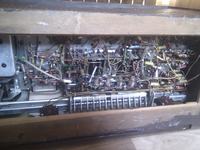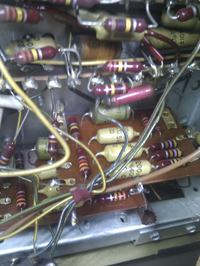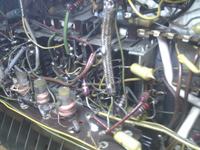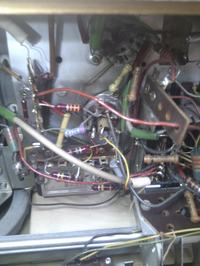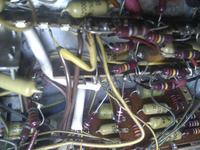Two EL84 lamps overheat in my radio.
Capacitors on the radio all, none is bulged or poured,
radio cleared from dust
The sound is clear and loud, only minimal background noise can be heard, but I think it results from the antenna, lack of good setup or age of capacitors.
I do not know exactly the temperature of the tubes, but after about two minutes of playing the tubes quite heavily in their hands in their half
I will also add that the left lamp glows slightly more than the right one
The rest of the lamps is not too hot, hence my fears.
I have marked the lamps on the photograph.
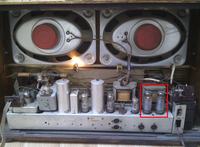
I was looking for information on the internet, but I did not find any reliable answers.
I have one more question, how much more or less (I do not require a detailed valuation) would it cost to replace and regenerate all capacitors on this radio?
Capacitors on the radio all, none is bulged or poured,
radio cleared from dust
The sound is clear and loud, only minimal background noise can be heard, but I think it results from the antenna, lack of good setup or age of capacitors.
I do not know exactly the temperature of the tubes, but after about two minutes of playing the tubes quite heavily in their hands in their half
I will also add that the left lamp glows slightly more than the right one
The rest of the lamps is not too hot, hence my fears.
I have marked the lamps on the photograph.

I was looking for information on the internet, but I did not find any reliable answers.
I have one more question, how much more or less (I do not require a detailed valuation) would it cost to replace and regenerate all capacitors on this radio?



